Museums are places where stories get told about the past, usually from the perspective of the winners. Settled in the upper reaches of Montreal’s McCord Museum—a place rich in Canadian art and artifacts, including the illustrious William Notman archive of photography—an exhibition by contemporary Cree–Irish Canadian artist Kent Monkman is subverting this tendency, handing back the microphone to voices that colonialism once drowned out.
The museum itself is a fascinating artifact, born of the passionate curiosity of Montreal lawyer and amateur historian David Ross McCord, who collected some 15,000 objects before founding the museum in 1921. Wealthy, bilingual, and engaged with nineteenth-century ideas of social reform, he took special interest in Aboriginal peoples in Canada, and served as an occasional negotiator on their behalf, while amassing his collection of Indigenous objects from the vantage point of white custodial privilege. To interrogate this history, the museum invited Monkman to serve as artist-in-residence. The result is a post-colonial turning of the tables, a response to the Notman collection that arouses in the viewer a kind of constructive suspicion about the engineering of display, the verities of history, and the reliability of representation in general. Who can we trust to tell us the truth about the past?
Monkman was an obvious choice for the project: he made his name by upsetting received ideas about Canada and First Peoples, often in the role of Miss Chief Eagle Testickle, an Indian princess he has performed and painted in exquisite pastiche for a decade, on both sides of the Atlantic. Decked out in high heels and haute-bling regalia, Miss Chief was inspired by traditional dual-gendered berdache characters, keepers of the hearth who helped the women while the heteros were out hunting. That buried history became a kind of muse. Whether vamping with cowboys, cavorting with Jesuits, or bringing Mounties to their knees, Miss Chief has been Monkman’s bitch goddess of transgression—infusing historical representations of “Indians” with wit and subversive glee in photographs, films, and paintings.
In Group of Seven Inches (a 2005 movie filmed on the hallowed grounds of the McMichael Canadian Art Collection in Kleinburg, Ontario), he took the patronizing testimonies of George Catlin and Paul Kane, written during their nineteenth-century travels in the West, and appropriated them as the script for his own racial projection fantasy of the innocent and unspoiled European male. With its old-fashioned subtitles and grainy, flickering visual effects, the work was a brilliant piece of cultural remastering: Miss Chief beguiles her tender, white-skinned charges with whisky, paints their portraits, and costumes them as authentic Europeans, according to her whim. Monkman’s later film, Robin’s Hood (2007), featured Miss Chief travelling to Europe—Sherwood Forest, to be precise—searching for the untainted, pre-contact European in his native habitat.
“Modernity espoused a wilful amnesia about the past,” Monkman said to me in an interview some years ago. Europeans such as Picasso adopted stylistic aspects of African tribal art in their works while remaining oblivious to the living cultures that generated them. Monkman’s painting Teaching the Lost (2012) takes back the mojo, with a headdress-clad Miss Chief delivering a lakeside seminar to a group of figures, their bodies resembling sculptures by Picasso, Henry Moore, and Alberto Giacometti—all inspired in their day by so-called “primitive” art. European vision is schooled by Indigenous insight, with the Aboriginal teacher in the power position.
For the McCord Museum, Monkman engineered another kind of reframing. “The project came out of the room itself,” he said a few days after his opening in early February. “It was a response to the experience of walking into that dark space, with its reflective glass vitrines, and thinking about the audience encountering itself in those reflections.” Windowless, and a bit disorienting, “it really is a kind of black box,” he adds. “It reminded me of being inside a camera.”
The resulting painting, Welcome to the Studio: An Allegory for Artistic Reflection and Transformation, picks up on that notion of photography, taking Monkman’s wrangling with art history in a new direction. Two legacies are engaged: the McCord’s outstanding archive of work by the Montreal commercial photographer William Notman, born in Scotland in 1826; and Gustave Courbet’s 1885 French masterpiece, The Artist’s Studio: A Real Allegory Summing Up Seven Years of My Artistic and Moral Life. Conceived as a commentary on painting’s role in French life, it depicts Courbet at the easel, attended by his muse and surrounded by patrons, critics, fellow artists, and members of the working poor—a compendious accounting of the social and economic ecosystem around art’s production. Courbet’s mission was to extol realism, an imperative doubly charged by the looming threat of photography, which was rapidly asserting itself as the medium of record.
Meanwhile, far across the Atlantic, Notman was setting up his studio at the foot of Montreal’s Bleury Street, the sort of enterprise that would eventually supplant the market for painted portraits. The photographs he and his team produced reveal the pleasures and perversities of life in Canada’s emerging financial centre.
Notman’s genius was to “imagine the studio as a space for identity performance,” says Sarah Parsons, author of a new ebook about Notman for the Art Canada Institute, “though he would never have described it like that. You could wear your own clothes if you wanted,” she adds, “but there was a whole retinue of people there to dress you in whatever persona you chose to take on.” A selection of painted backdrops presented further possibilities for play-acting.
Consider, as Monkman has, the portrait collection of wealthy Montrealers dressed for the Château de Ramezay Ball of 1898, which drew together the members of high society in support of the Women’s Antiquarian Society. Guests were invited to take their pick of costume categories—from habitants and coureurs de bois to British officers and, of course, Indians. (Then, as now, settler culture made a point of “celebrating” Indigenous society at the very moment when it was being effaced.)
Thus, in Monkman’s display we encounter the tomahawk-wielding Andrew A. McCulloch, dressed in a mishmash of stereotypes, a flinty-looking fellow more fitted for reckoning sums than taking scalps. Notman’s double portrait, Mr. Reynolds as “Quewaygoosquequamteros” and friend, Montreal, QC, from 1870, is another of the archives’ more mysterious creations. McCord curator Hélène Samson insists that the image is not a composite, a collage technique studio photographers often used in their more elaborate works. Yet the two subjects, clad respectively in bowler hat and Indian headdress, seem uncannily similar, the tomahawk pipe–smoking Indian appearing as doppelgänger to the dapper man about town.
The dashing Campbell McNab, presumably part of the same Montreal smart set (the records don’t tell), is depicted by Notman in the role of hunter-trapper, snowbound and lying back in feigned satiety amid a heap of antlers and moose heads. Fondling his firearm, he is the very image of the hunky woodsman, fresh from ravaging the virgin wilderness. Past and present, white and Native, rich and poor, urban and rural are conflated in a synthetic photographic puzzle.
Like Notman, Monkman frolics in the fakery, creating from these characters another world of his own, a triptych painting over seven metres long, set in the photographer’s historical atelier. Yet instead of Notman, Monkman places himself at centre stage. Attended by James McGill’s lapdogs, who primp on an ottoman at his side, he is pictured at work on a portrait of the dewy-eyed Percival Molson, another figure filched from the Notman cache. Portrayed in the mode of Jacques-Louis David’s Leonidas at Thermopylae (1813), the young scion sits perched on a parapet, like a Greek god. A cheeky homoeroticism adds fizz to the champagne here, as does the presence at stage left of beefy members of the McGill wrestling team—those blooms of Anglo youth who once sweated and strained in the gymnasium not far from where the McCord now stands.
Throughout the piece, Notman’s cast of characters is rearranged to suggest new outcomes. Buffalo Bill and Sitting Bull are revived here from his historical portrait of them, taken in Montreal during their Wild West tour of 1885. Here, though, instead of gazing elegiacally into space, Sitting Bull seems to be flipping Buffalo Bill the bird. (“I thought he was maybe just stroking his rabbit skins,” Monkman says coyly.)
The reflective glass that fronts the piece allows the viewer to become visually intermingled with the scene and implicated in its goings-on—all the more so because of the stool and easel Monkman has placed at the centre of the exhibition space. Visitors are instructed to position themselves strategically to appear at the heart of the painting, in the role of creator, and invited to take selfies in situ. “The whole project came out of my interest in that shift toward photography as a popular medium that Notman was so much a part of,” Monkman says. “Now everyone’s a photographer. But,” he adds wryly, “not everyone is a history painter.”
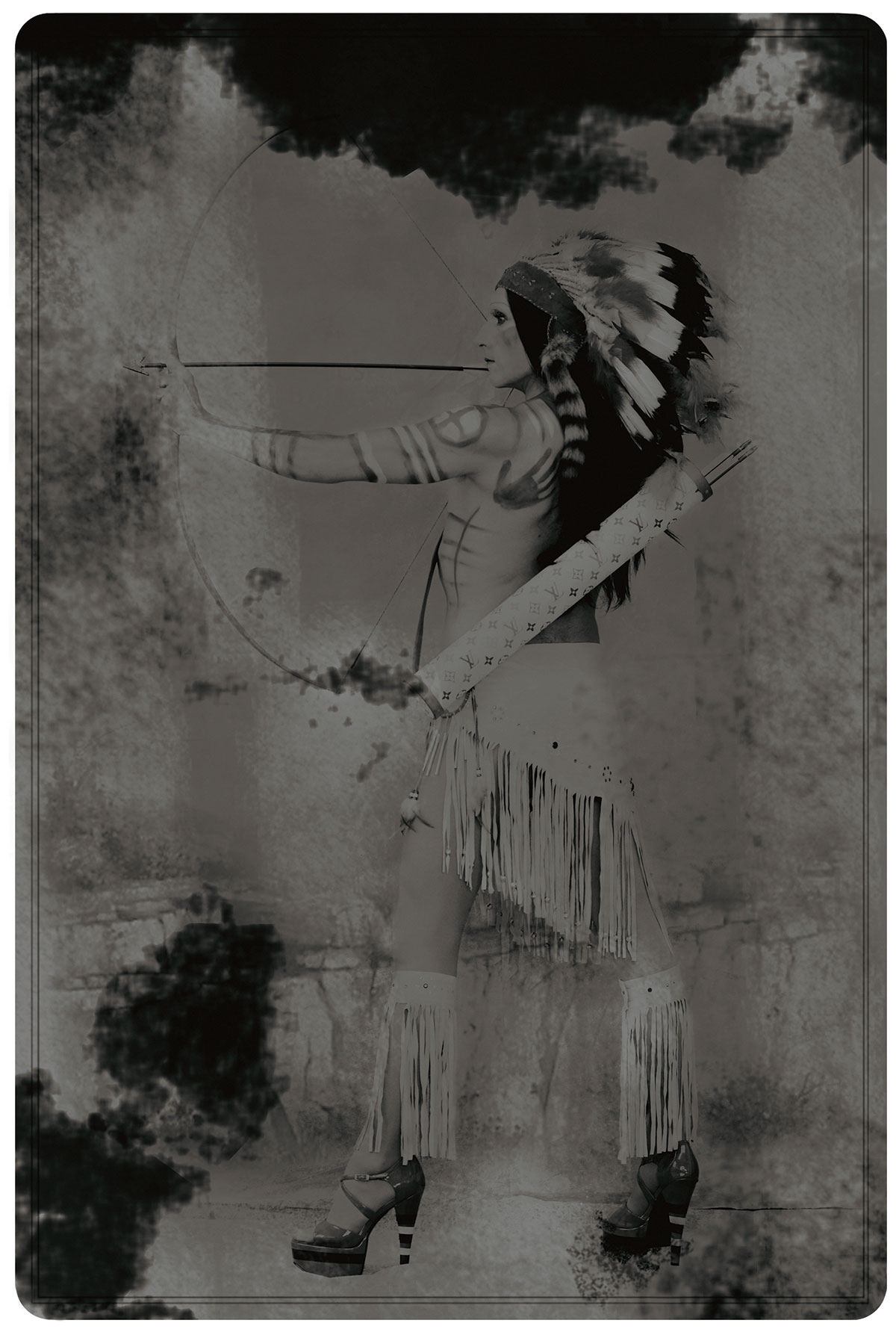
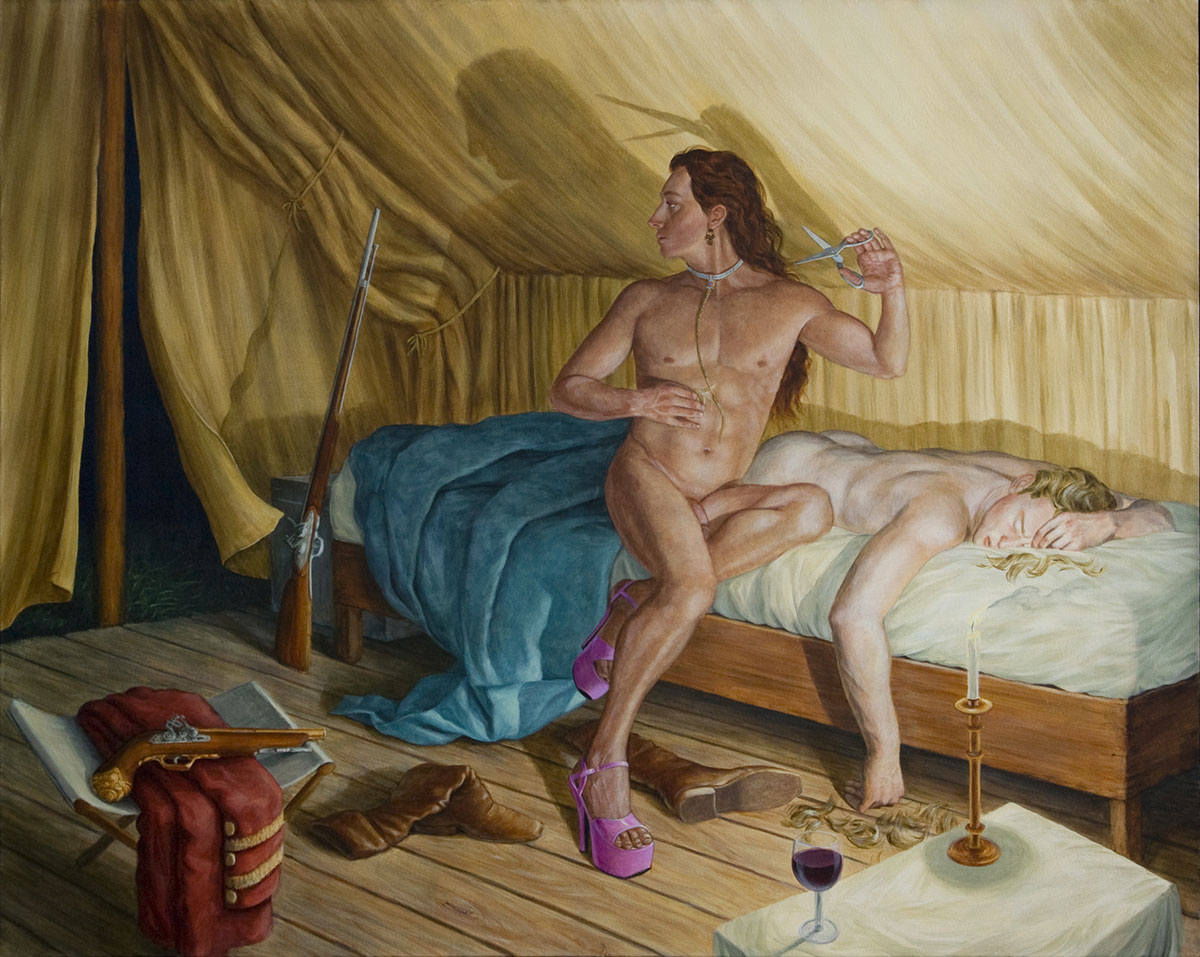
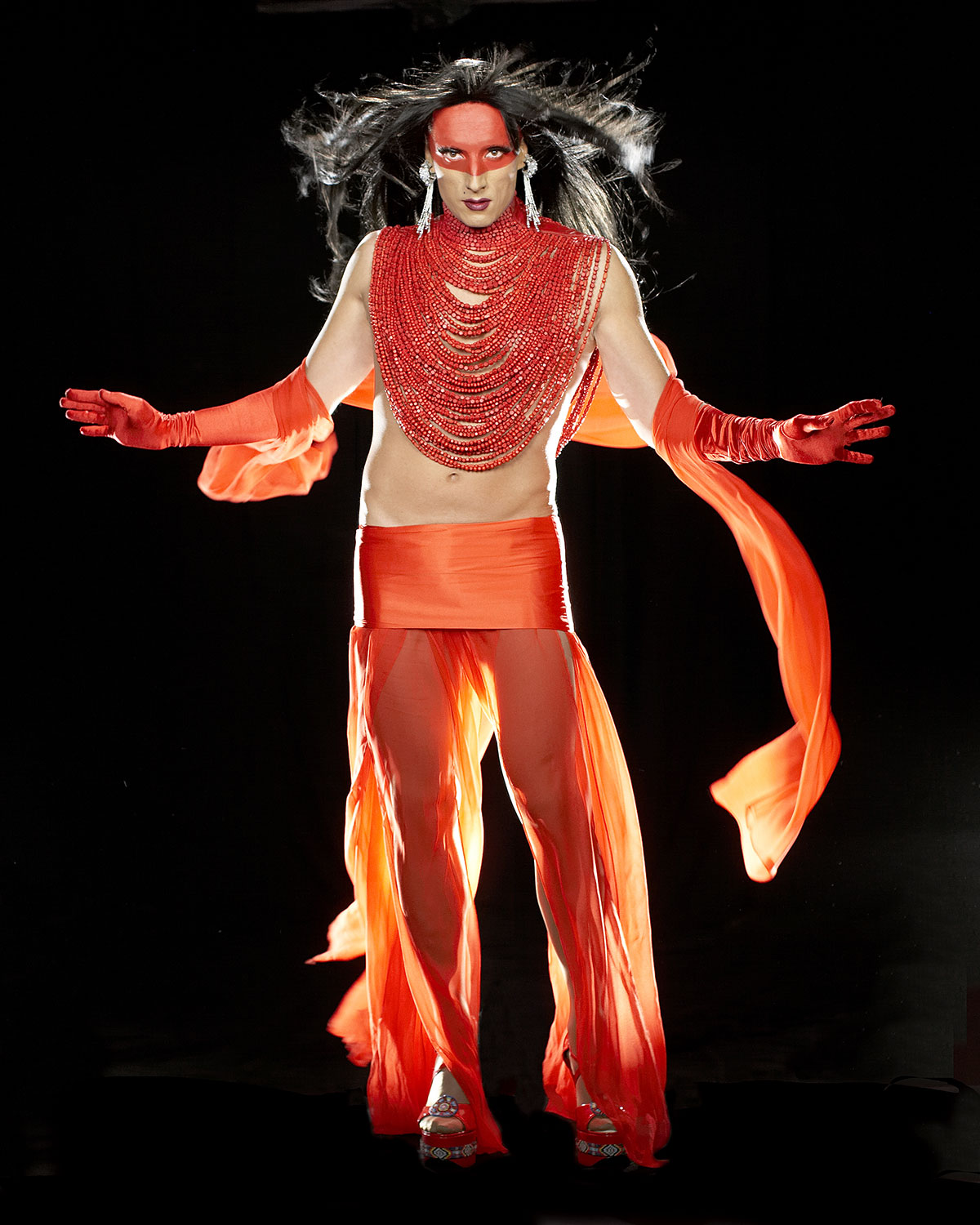
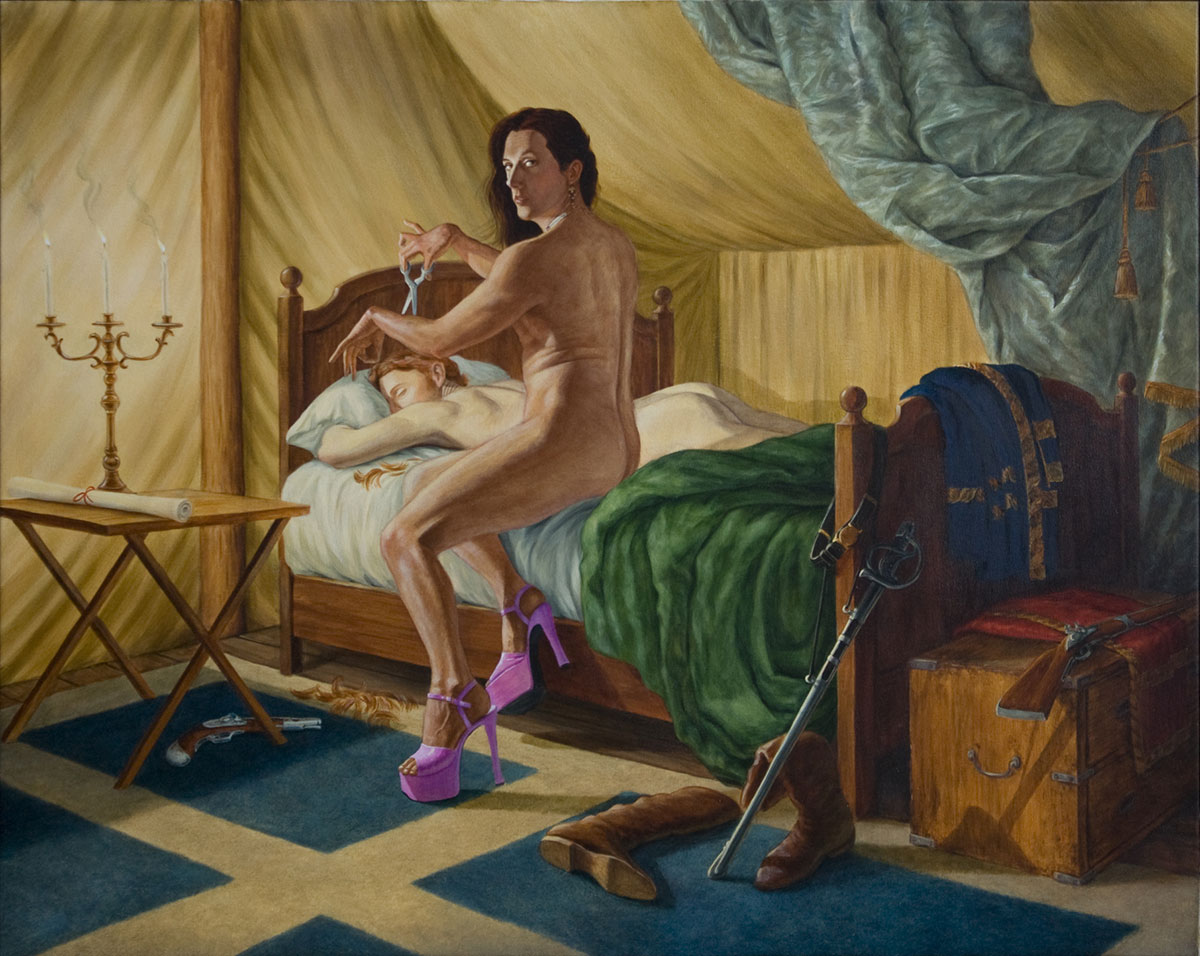
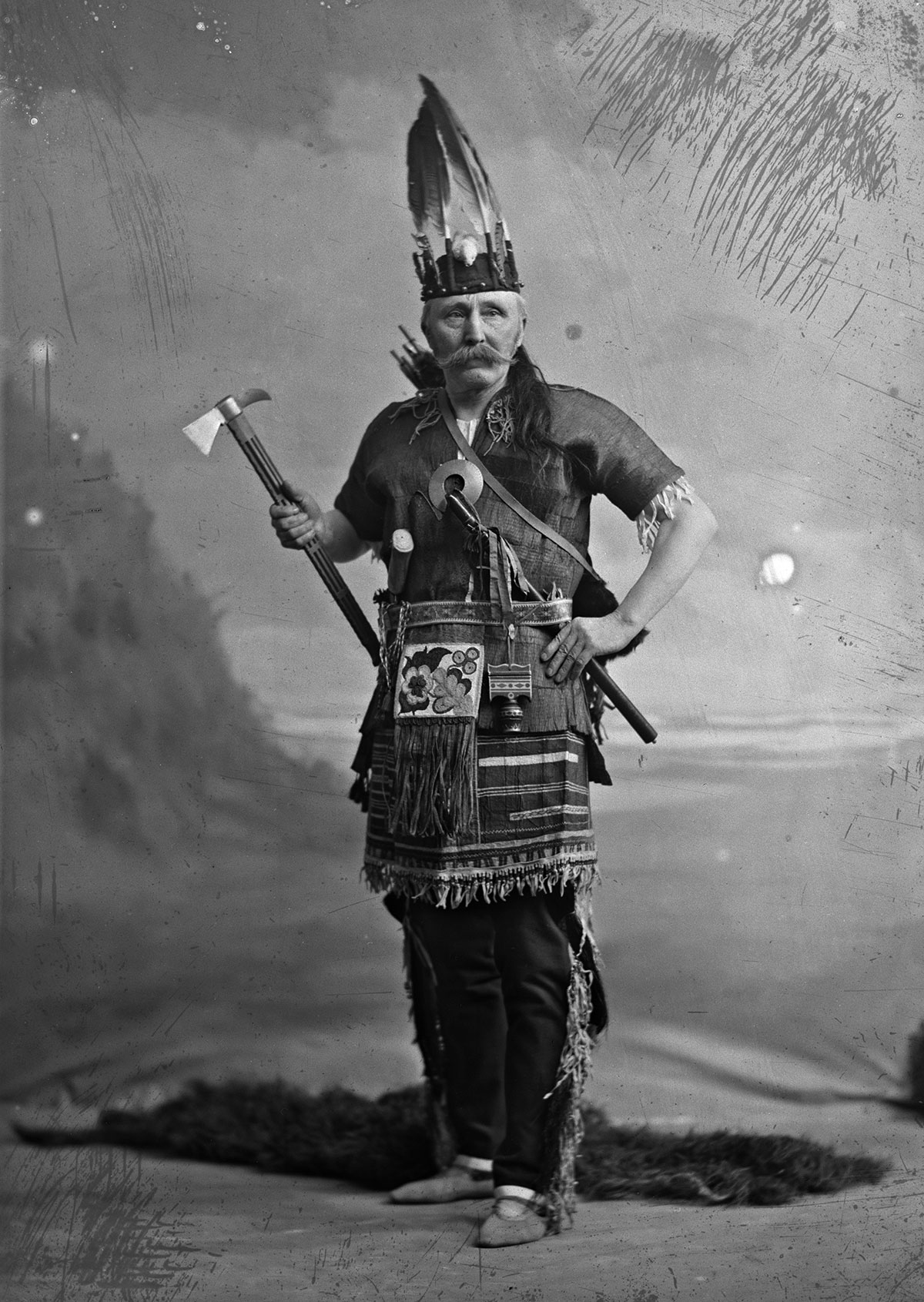
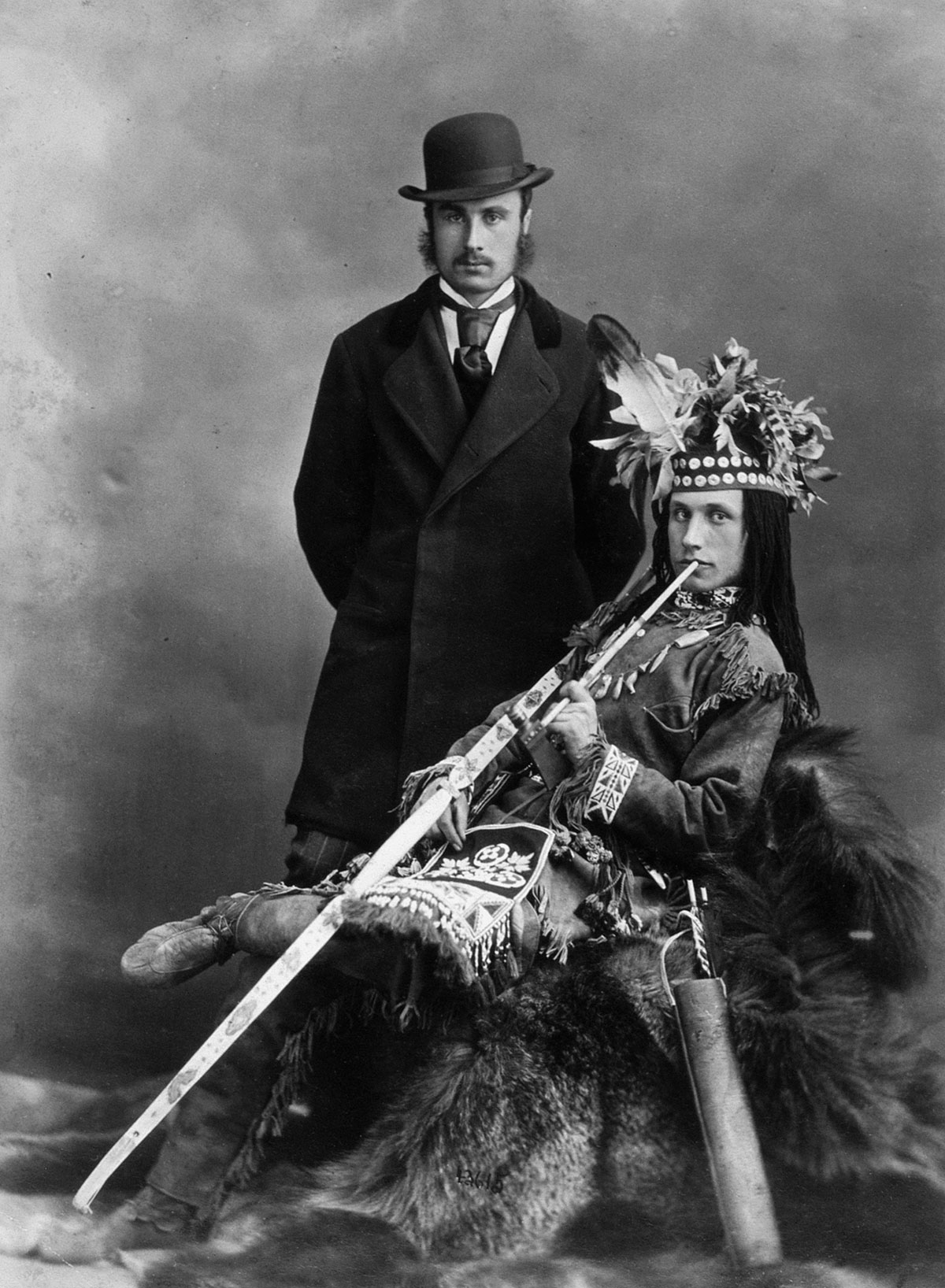
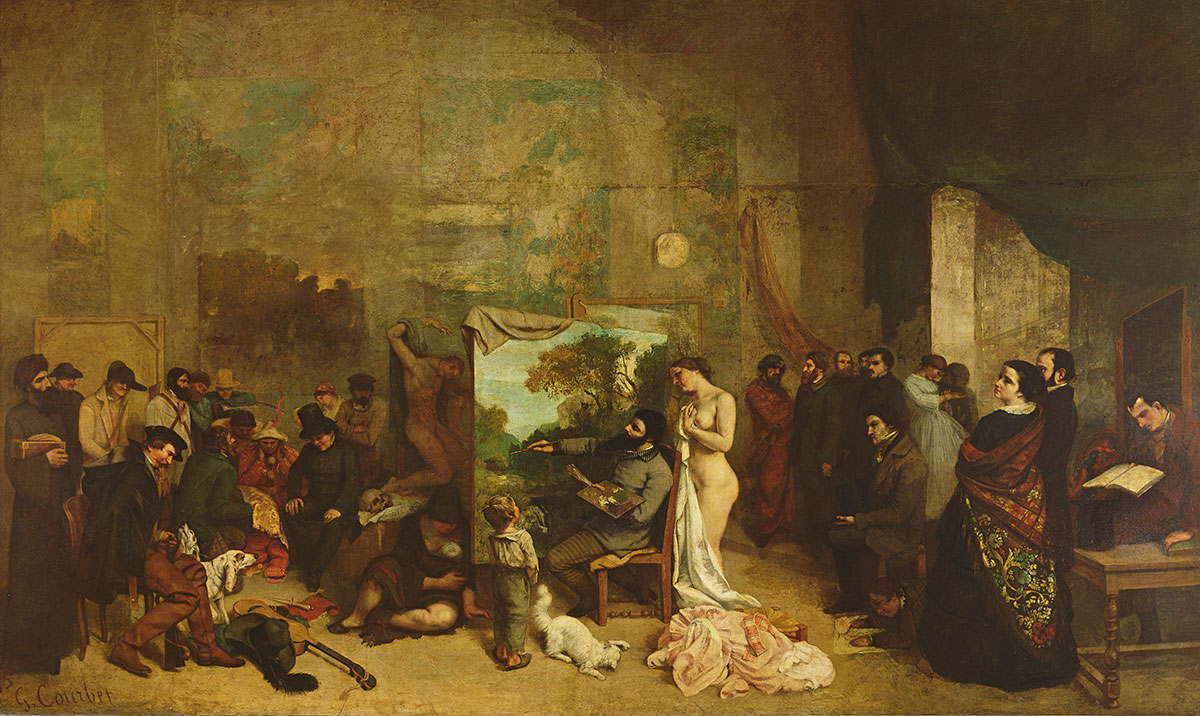
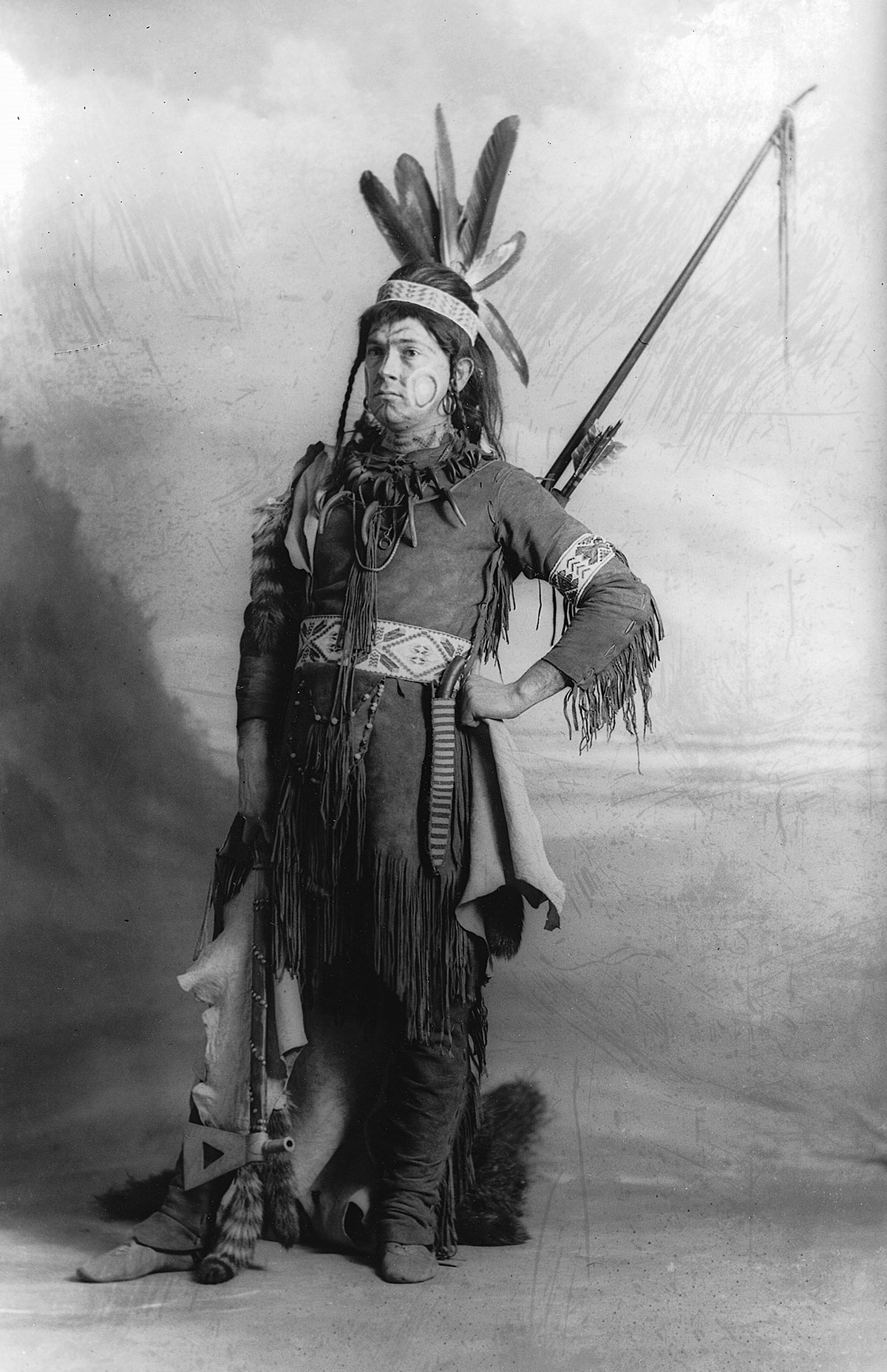
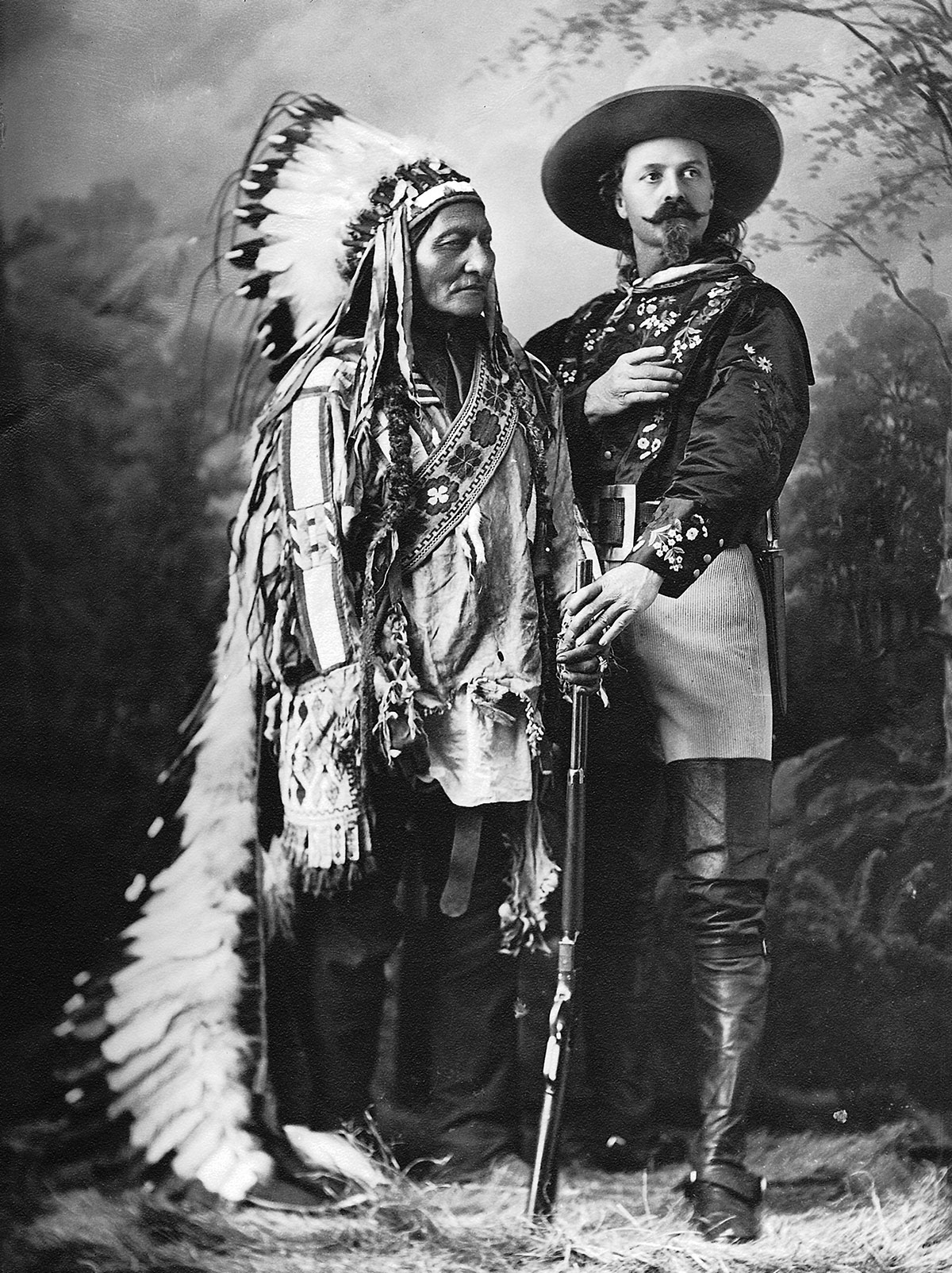
This appeared in the May 2014 issue.




